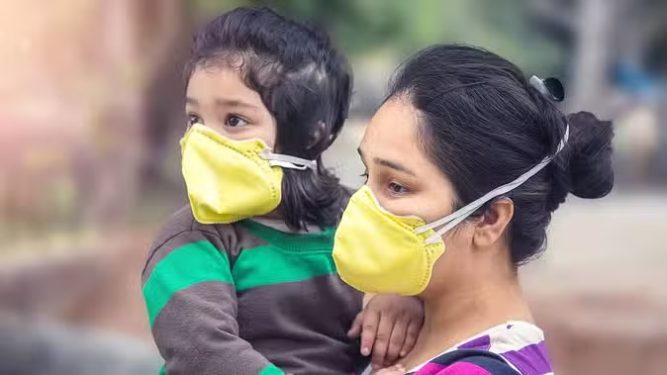
The air quality in Haryana has drastically deteriorated, with Bahadurgarh recording the worst pollution levels in the country on Friday. The Air Quality Index (AQI) in Bahadurgarh surged to 392, the highest recorded in any city in the state this season. Just the day before, the AQI was 226, indicating a rise of 166 points in just one day. On November 4, Bahadurgarh (335) was the second most polluted city in the country. Other cities in Haryana, including Bhiwani (325), Sonipat (319), and Jind (304), also fell into the “highly polluted” category, all crossing the 300 AQI mark in a day.
If AQI reaches 400, the Haryana State Pollution Control Board will implement GRAP-3 restrictions. With AQI nearing 400, residents are already experiencing eye irritation and breathing discomfort. According to Professor Ravindra Khaiwal from the Community Medicine Department at PGI, rising pollution levels are expected to increase respiratory, eye, skin, and heart-related cases in hospitals, with pregnant women and children facing double the risk. Factors such as changes in wind speed and local pollution sources contribute to the escalating pollution levels.
44 Cities Nationwide Record AQI Between 200-300
Across India, 44 cities registered AQI levels between 200 and 300, categorized as “polluted.” This includes six cities in Haryana: Gurugram (271), Ballabhgarh (261), Faridabad (235), Hisar (232), Kurukshetra (221), and Rohtak (259). On November 8, Gurugram (302) was the fifth most polluted city in India.
Stringent GRAP-3 Restrictions to Be Imposed if AQI Reaches 400
A senior official from the Haryana State Pollution Control Board expressed concern over the state’s AQI approaching 400. If this threshold is met, GRAP-3 will be enacted, increasing restrictions. GRAP-2 has already been implemented in 14 NCR-adjacent districts, with additional anti-pollution measures in place. For construction sites of 5,000-10,000 square meters, one anti-smog gun is mandated, while larger sites require up to four.
Stubble Management Efforts and Challenges
By Friday, approximately 54 lakh tons of stubble had been managed in Haryana, out of a target of 81 lakh tons. With about 85% of rice harvesting complete, the stubble-burning season is nearing its end. However, it is projected that the state may fall short of its target this season. In 2023, the target was set at 80 lakh tons, but only around 74 lakh tons were processed. Currently, 919 stubble-burning incidents have been tracked in the state.
An agricultural official stated that 29 lakh tons have been processed in-situ and 14 lakh tons ex-situ, with an additional 11 lakh tons used as fodder. Haryana’s total rice acreage is 38.87 lakh acres, split between basmati (19.49 lakh acres) and non-basmati (19.38 lakh acres). The state has distributed over 10,000 super seeders and 1,405 baling units, along with 90,000 machines for in-situ management, and allocated ₹25 crores in flexi funds to ensure an uninterrupted supply to industries.
Stubble Burning Cases and Penalties
On Friday, 19 new cases of stubble burning were reported, bringing the total to 919. So far, 394 farmers have been fined, with penalties totaling ₹938,900. Additionally, 319 FIRs have been filed against violators. The agriculture department has suspended 26 officers, and 396 officers have been issued show-cause notices for failing to prevent stubble burning.









